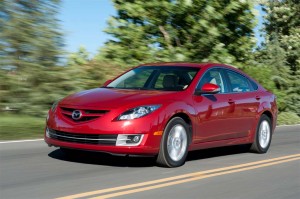Continuing to unwind their decades-old relationship, Mazda Motors is considering whether to walk away from the Michigan assembly plant it operates as part of a joint venture with Ford Motor Co.
The move would be the latest in a generally genial corporate divorce that was triggered by Ford’s decision to sell off most of its stake in Mazda, last year. At one point, the U.S. maker was the dominant shareholder in its Japanese partner, but Ford now holds just a 3.5% stake.
 A final decision on whether to maintain the AutoAlliance International joint venture will be announced later this year, said Mazda Chief Financial Officer Kiyoshi Ozaki. If Mazda does pull out of the two-decade-old Flat Rock plant the future of the factory would be left in jeopardy, industry observers warn.
A final decision on whether to maintain the AutoAlliance International joint venture will be announced later this year, said Mazda Chief Financial Officer Kiyoshi Ozaki. If Mazda does pull out of the two-decade-old Flat Rock plant the future of the factory would be left in jeopardy, industry observers warn.
The factory has the capacity to produce 240,000 vehicles annually, and needs to build at least 170,000 to break even, according to Ozaki. But last year it produced just 114,000 – 36,000 Mazda6 sedans and 78,000 Ford Mustangs.
That’s not a good equation for Mazda, struggling to reverse a $32 million loss during its fiscal third quarter, worsened by a 9% decline in the U.S. market, last year, while most key rivals posted double-digit gains.
On the other hand, Mazda is also dealing with a strong Japanese yen, which is making it difficult to compete with products shipped in from Japan – and last year, about 80% of the vehicles assembled at its home plants were exported.
The strong yen has led rival Mitsubishi to pump new life into its own under-utilized U.S. assembly plant, which will get an assortment of new products over the next several years. Other Japanese makers, including Nissan, Honda and Toyota, are all looking at ways to reduce their dependence on Japanese assembly lines.
So, that could lead Mazda to actually consider expanding its production base, at Flat Rock – or, alternatively, ramping up production at its factory in Mexico.
While Ford officials decline to discuss Mazda’s plans for Flat Rock, it’s clear the two makers are intent on going their own separate ways.
Their relationship dates back to an automatic transmission join venture, in 1969. A decade later, Ford acquired a 25% stake in Mazda, which is based in Hiroshima. In 1996, when the Japanese maker was struggling for survival, Ford boosted its stake to 33.4% which, under Japanese law, gave it management control.
The two companies have worked on a variety of product programs since then, including the C-segment platform that is used by Ford for its new Focus and C-Max models, but over the last several years the two companies have begun to diverge their efforts.
Ford trimmed its stake to 13% in 1998, raising some much-needed cash but giving up management control. It reduced its stake to 11% a year later, and to just 3.5% in 2010.
Since then, Mazda has moved to separate its operations from Ford’s in the fast-growing Chinese market. Analysts say it is likely only a matter of time before the two makers also break up their long-running pickup truck venture in Thailand.

